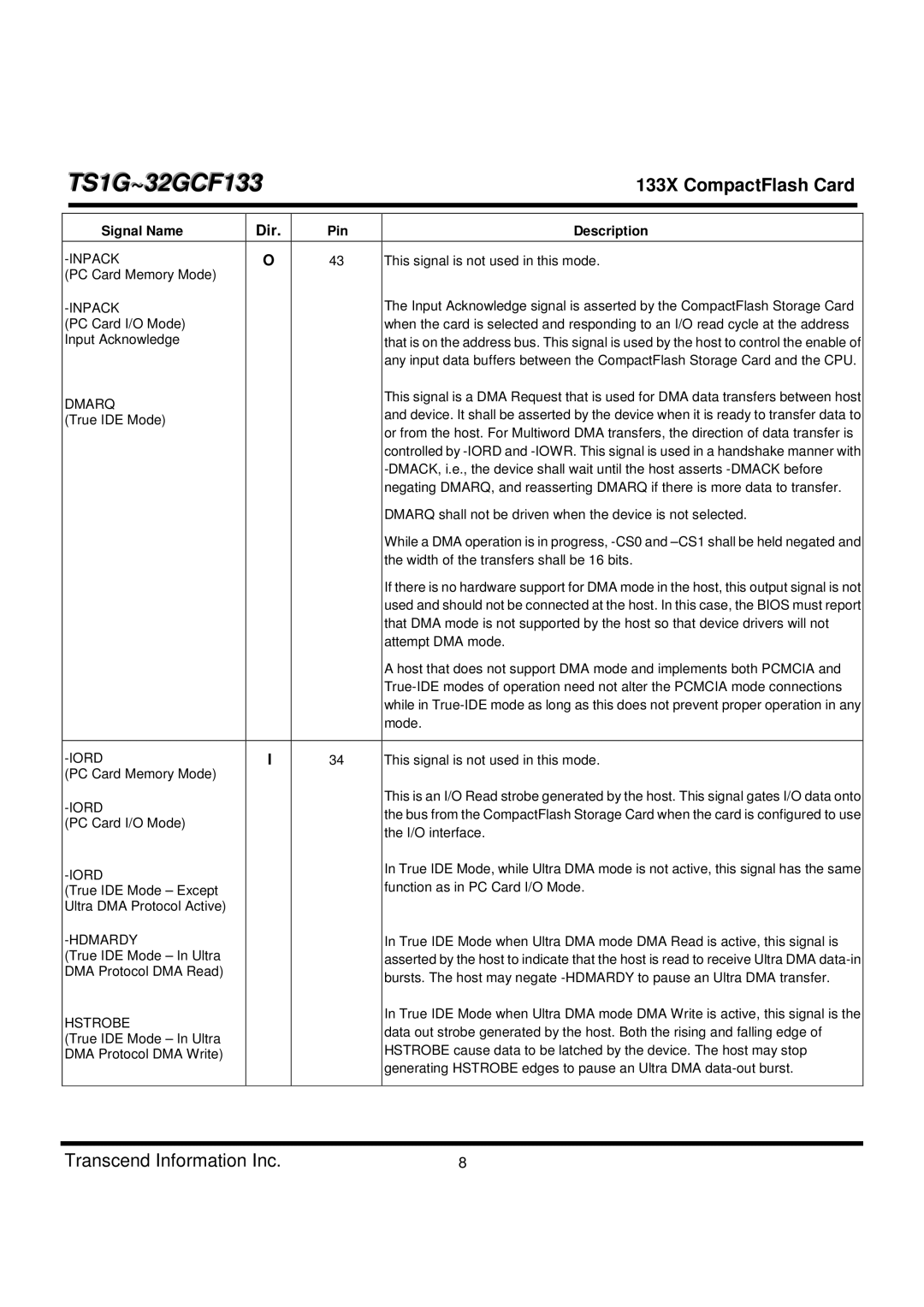TS1G-32GCF133 specifications
Transcend Information, a leading manufacturer of storage and multimedia products, offers a range of high-performance memory solutions. One prominent product is the TS1G-32GCF133, a compact and reliable CompactFlash (CF) card designed for various applications, from professional photography to industrial use and embedded systems.At the heart of the TS1G-32GCF133 is its 32GB storage capacity, which provides ample space for storing high-resolution images, videos, and data files. This capacity meets the demands of both casual users and professionals requiring significant storage for their content. The card adheres to the CompactFlash Association's CF Type I specifications, ensuring compatibility with a wide range of devices, including DSLRs, camcorders, and even embedded systems.
One of the standout features of this model is its impressive transfer speed. The TS1G-32GCF133 boasts a read speed of up to 133x, which translates to around 20MB/s. This relatively high-speed performance is critical for users who need quick access to data, especially when capturing bursts of images or recording video. The card's write speed, while somewhat lower, ensures that data can still be written effectively without significant delay, making it suitable for various recording scenarios.
Transcend has implemented advanced technologies in the TS1G-32GCF133 to enhance both performance and reliability. The use of SLC (single-level cell) technology in some areas ensures greater endurance and stability, which is particularly important in professional applications where data integrity is paramount. Additionally, the card is equipped with built-in ECC (Error Correction Code) functionality, which detects and corrects potential errors during data transfer, further safeguarding the stored information.
Physical durability is another critical aspect of the TS1G-32GCF133. This CompactFlash card is designed to withstand harsh conditions, making it suitable for use in demanding environments. Its robust construction is resistant to shock, vibration, and extreme temperatures, providing peace of mind for users who need reliable performance in the field or in industrial settings.
In terms of compatibility, the TS1G-32GCF133 supports both the CF5 and CF6 standards, allowing it to work seamlessly with a wide range of devices. The card is also backward compatible with older CF devices, making it a versatile choice for those upgrading their storage solutions.
In conclusion, the Transcend Information TS1G-32GCF133 stands out as a reliable and high-performance CompactFlash card that meets the needs of diverse users. With its substantial storage capacity, impressive transfer speeds, advanced technologies, and robust design, it serves as an ideal solution for professionals and enthusiasts alike who seek performance and reliability in their memory storage.
